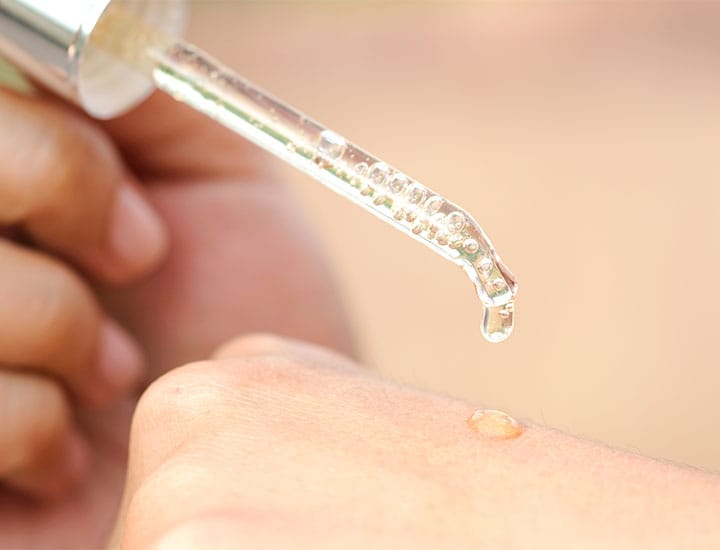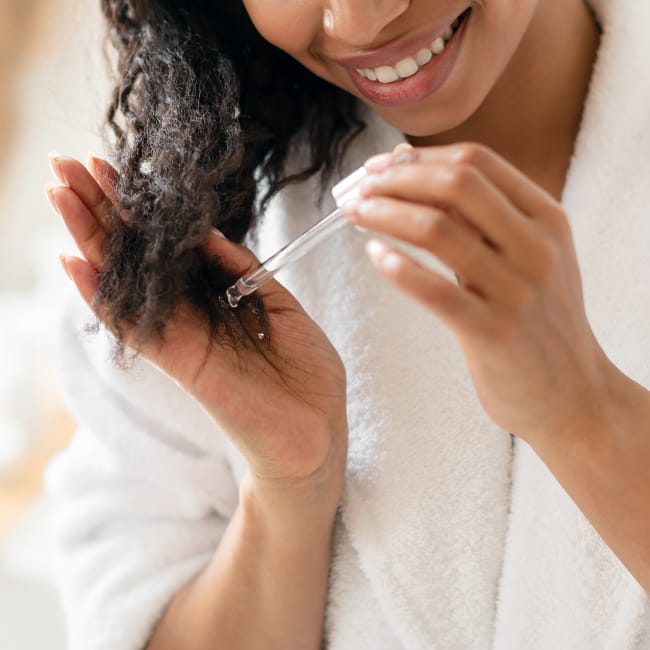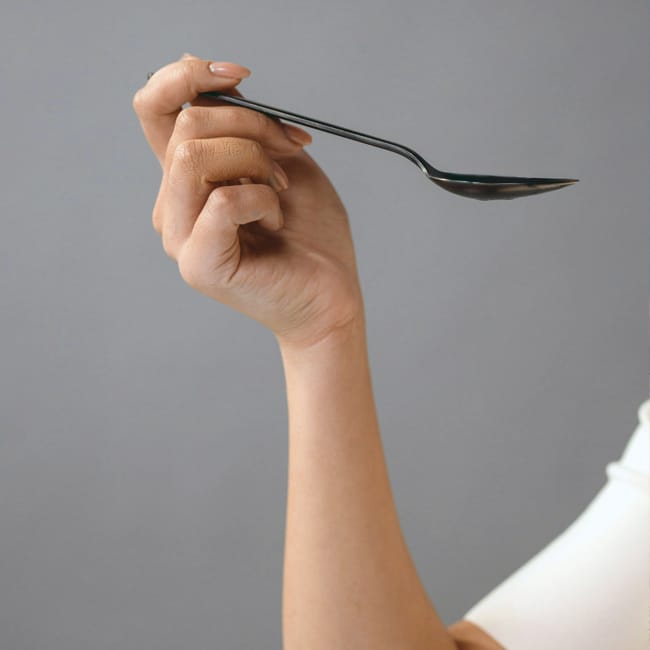Cleansers, moisturizers, and sunscreens are a must in any great skincare routine, but serums are the powerhouse product that take your skin to a whole new level. Think of serums as workhorses that deliver a more potent punch of a certain ingredient than you can typically get from using a moisturizer alone. They’re also the product that allows you to personalize your skincare routine: depending on your skin concern or what it needs in the moment, there’s a serum that’s waiting to tackle that need. In the case of dry, mature skin that is showing signs of fine lines and crow’s feet, there are several serum ingredients that dermatologists themselves use and recommend.
Clinical Dermatologist and Researcher Dr. Enrizza P. Factor with myeczemateam.com and Dr. Anna Chacon, a dermatologist at MyPsoriasisTeam, weighed in with their picks for the top two firming natural serum ingredients that can help blur frown lines and crow’s feet.


Hyaluronic Acid & Glycerin
One may have “acid” in its name, and the other has a chemical-sounding moniker as well, but there’s nothing harsh about hyaluronic acid or glycerin. These two ingredients, whether used together or separate in different serums, sort of “seal the deal” when applied after active ingredients like retinol, glycolic acid, and vitamin C, helping your skin achieve a plumper, more vibrant and youthful appearance.

“Choose serums containing humectant components, which pull moisture from the air and infuse it into the skin,” Dr. Chacon says. “These compounds include hyaluronic acid, glycerin, betaine, and panthenol. Watch out for serums containing essential fatty acids, ceramides, plant-derived lipids, coconut extract, and vitamin E, as well as serums produced with other ingredients like ceramides.”

Combine Humectants With Active Ingredients
Humectants alone may not be enough to deliver the ingredients needed to really make a difference in your skin if you want to address fine lines and crow’s feet, but they are a worthy accomplice to other stellar, proven-effective serum ingredients. According to Dr. Factor, in general, serums contain topical antioxidants including vitamins A, C, and E. “They also contain topical retinol and ingredients that even out skin tone,” Dr. Factor says. “When layered underneath moisturizers, serums act as targeted treatments for wrinkles, pigmentation, and redness.” Two actives of note, she says, include vitamin C and glycolic acid, which can even be used together.

Glycolic acid is an exfoliant that removes dead skin cells, while vitamin C is an antioxidant that can help prevent sun damage and brighten and tone the skin.
“If you're looking for a skincare duo to help you achieve the dewy, radiant, even skin of your dreams, look no further: hyaluronic acid acts as a humectant by pulling moisture into your skin, making it ideal to use with glycolic acid, which can be drying or irritating at times,” Dr. Factor says. “You can opt to layer hyaluronic acid over glycolic acid or use hyaluronic acid in the morning and glycolic acid in the evening.”

Another winning combination is a vitamin C serum (applied in the morning) paired with a hyaluronic acid serum to lock in moisture. Be sure to follow up with a moisturizer and sunscreen, as well.
“Vitamin C and Hyaluronic Acid included in this serum work to stimulate collagen while keeping dry skin at bay,” Dr. Factor says. “This achieves a reduction in the appearance of fine lines, wrinkles, age, and sunspots. If you are applying a vitamin C serum and hyaluronic acid separately, it's suggested that you apply the vitamin C first, and then add the hyaluronic acid afterward in order to help fortify the skin barrier and lock in the moisture.”
Your new skincare game plan: first target signs of aging with serums that contain retinol, vitamin C, and glycolic acid. And next: level up with moisturizing serum ingredients like hyaluronic acid and glycerin to blur fine lines and make your skin smooth as silk.


























